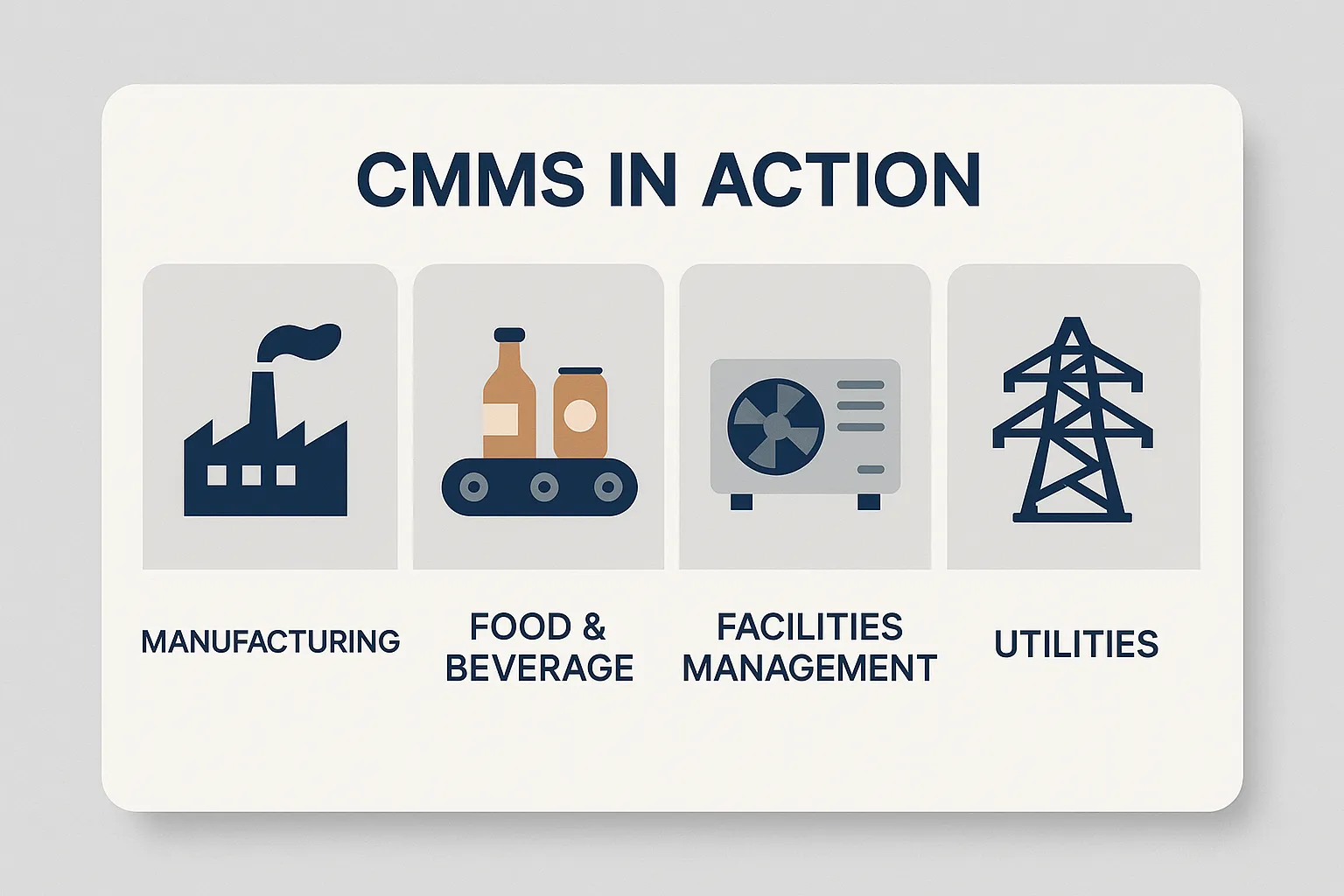What is a CMMS? Definition, Examples & Real-World ROI
A Computerised Maintenance Management System (CMMS) is a software solution that helps factories, plants, and facilities manage their maintenance operations more effectively. But what does it actually do — and why are 59% of manufacturers now using one?
In this guide, we’ll explain what a CMMS is, how it works, common use cases, and the real-world business impact it delivers. By the end, you'll see why modern maintenance teams are leaving spreadsheets behind and investing in digital reliability.

What Does CMMS Stand For?
CMMS stands for Computerised Maintenance Management System. It’s a centralised software platform that digitises maintenance workflows — from work orders and inspections to asset history, parts inventory, and compliance tracking.
Think of it as a digital control tower for your maintenance team.
"A CMMS helps maintenance teams do their jobs more effectively and enables managers to make data-driven decisions to manage costs and allocate resources." — Reliable Plant
How Does a CMMS Work?
A modern CMMS automates and streamlines five core areas:
- Work Order Management: Assign, prioritise, and track tasks in real time
- Preventive Maintenance Scheduling: Automate inspections, lubrication, and replacements
- Asset History & Documentation: Full traceability across equipment lifecycle
- Parts & Inventory Management: Ensure spares are in stock when needed
- Compliance & Audits: Digitally log all safety and quality checks
CMMS Examples (Real-World Use Cases)
1. Manufacturing:
- Schedule preventive tasks for production lines
- Monitor asset performance and reduce downtime
- Used by teams in Makula’s Manufacturing and Food & Beverage sectors
2. Facilities Management:
- Manage HVAC, lighting, fire safety checks
- Log technician inspections with time-stamped records
- Useful for Facilities Management
3. Energy & Utilities:
- Run condition-based maintenance using IoT sensors
- Cut unplanned outages across distributed infrastructure

What Are the Benefits of a CMMS?
⏱️ Downtime Reduction
According to Plant Engineering, each unplanned downtime incident costs ~$108,000 on average. A CMMS reduces this by enabling preventive maintenance and faster response times.
- Predictive maintenance cuts machine downtime by 30–50% (McKinsey)
- Plants using CMMS report 28% higher uptime (Aberdeen Group)
ROI & Efficiency
CMMS platforms often pay for themselves within two years:
- 300–500% ROI in efficiency and cost savings
- Predictive strategies lower maintenance costs by 25% (Deloitte)
Compliance & Safety
CMMS helps pass audits and avoid regulatory fines by documenting every inspection, repair, and calibration.
Companies with preventive maintenance programs see 50% fewer safety incidents (FaultFixers)
CMMS vs EAM: What’s the Difference?
While both are used in asset management, CMMS is focused on maintenance, whereas Enterprise Asset Management (EAM) covers the full asset lifecycle including procurement, depreciation, and capital planning.
If you're running a mid-sized plant or facility, a CMMS is likely all you need.
Why CMMS is a Must-Have in 2025
With rising labour costs, stricter compliance standards, and increasing equipment complexity, maintenance is no longer a “back-office” function. It’s a strategic advantage.
- 70–80% of maintenance should now be proactive, not reactive
- CMMS enables that shift by automating task scheduling, work orders, and insights
- AI-powered platforms like Makula even support predictive triggers via IoT
Why Makula CMMS?
If you're ready to move from firefighting to foresight, Makula’s CMMS Platform is designed specifically for factories, plants, and maintenance-intensive teams.
✅ Explore CMMS Features
✅ Reduce Downtime
✅ Connect with AssetHub and Industrial AI
Sources
- Plant Engineering (2023) – https://www.plantengineering.com/maintenance-survey-indicates-shift-to-cloud/
- McKinsey & Co. – https://www.mckinsey.com/capabilities/operations/our-insights/manufacturing-analytics-unleashes-productivity-and-profitability
- Deloitte Analytics – https://datacentremagazine.com/articles/predictive-maintenance-in-the-data-centre-the-power-of-ai
- Aberdeen Group – https://www.faultfixers.com/blog/preventive-maintenance-roi
- FaultFixers (2025) – https://www.faultfixers.com/blog/preventive-maintenance-roi
- Reliable Plant – https://www.reliableplant.com/maintenance-management-31856



.webp)

